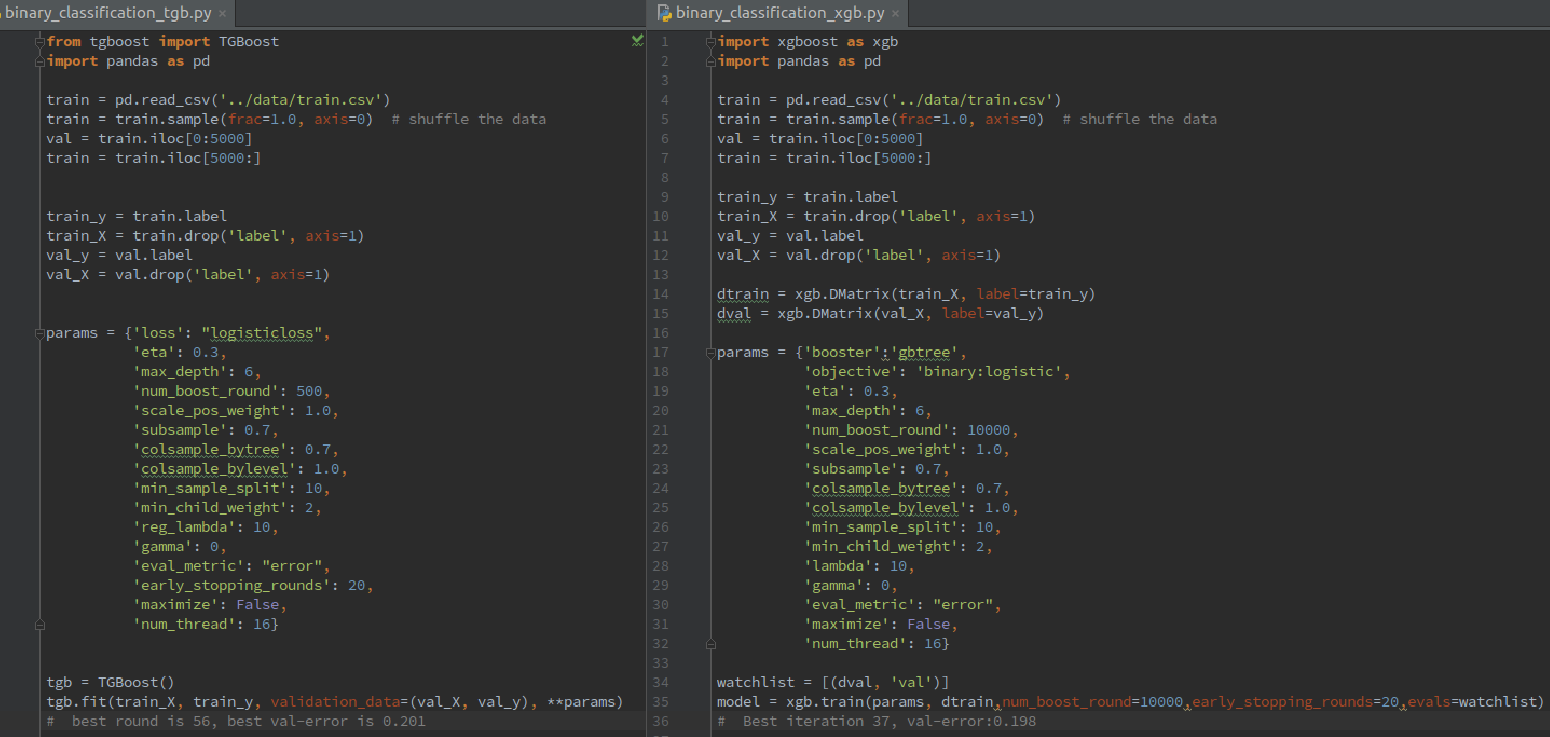It is a Tiny implement of Gradient Boosting tree, based on the xgboost algorithm, and support most features in xgboost. This project aims to help people get deeper insights into GBM, especially XGBoost. The current implement has little optimization, so the code is easy to follow. But this leads to high memory consumption and slow speed.
Briefly, TGBoost supports:
-
Built-in loss, Square error loss for regression task, Logistic loss for classification task
-
Customized loss, use
autogradto calculate the grad and hess automaticly -
Early stopping, evaluate on validation set and conduct early stopping.
-
Multi-processing, when finding best tree node split
-
Feature importance, output the feature importance after training
-
Handle missing value, the tree can learn a direction for those with NAN feature value
-
Regularization, lambda, gamma (as in xgboost scoring function)
-
Randomness, subsample,colsample_bytree,colsample_bylevel
-
Weighted loss function, assign weight to each sample.
TGBoost is implemented in Python 2.7, use Pandas.DataFrame to store data, and autograd to take derivation. These package can be easily installed using pip.
It is a binary classification task, the dataset can be downloaded from here. It has 40000 samples and each sample with 52 features, some feature has missing value. The dataset is splited into trainset and validation set, and compare the performance of TGBoost and XGBoost on the validation set.
As the following figure shows, TGBoost get its best result at iteration 56 with 0.201 error rate. XGBoost gets its best result at iteration 37 with 0.198 error rate. They are roughly the same! However, I must say TGBoost is relatively slow.
You can define your own loss function:
from tgboost import TGBoost
import pandas as pd
import autograd.numpy as anp
train = pd.read_csv('../data/train.csv')
train = train.sample(frac=1.0, axis=0) # shuffle the data
val = train.iloc[0:5000]
train = train.iloc[5000:]
train_y = train.label
train_X = train.drop('label', axis=1)
val_y = val.label
val_X = val.drop('label', axis=1)
def logistic_loss(pred, y):
return -(y*anp.log(pred) + (1-y)*anp.log(1-pred))
params = {'loss': logistic_loss,
'eta': 0.3,
'max_depth': 6,
'num_boost_round': 500,
'scale_pos_weight': 1.0,
'subsample': 0.7,
'colsample_bytree': 0.7,
'colsample_bylevel': 1.0,
'min_sample_split': 10,
'min_child_weight': 2,
'reg_lambda': 10,
'gamma': 0,
'eval_metric': "error",
'early_stopping_rounds': 20,
'maximize': False,
'num_thread': 16}
tgb = TGBoost()
tgb.fit(train_X, train_y, validation_data=(val_X, val_y), **params)-
reduce memory usage
-
speed up training and predicting
-
post prunning
the current implement just stop growing the tree when the split gain is negative, better to use post prunning instead(as in xgboost)
-
metric:
precision, recall, f_score, etc.
-
cross validation
-
implement a high-performance data structure to replace
Pandas.DataFrame
